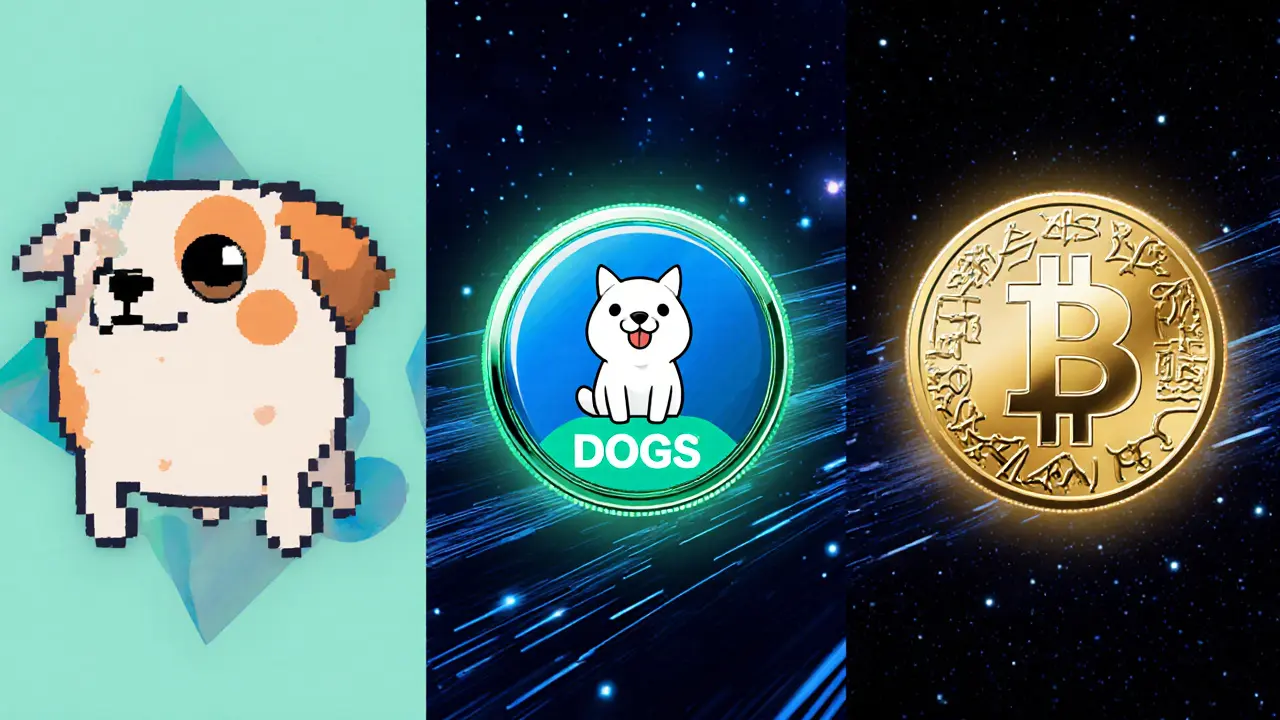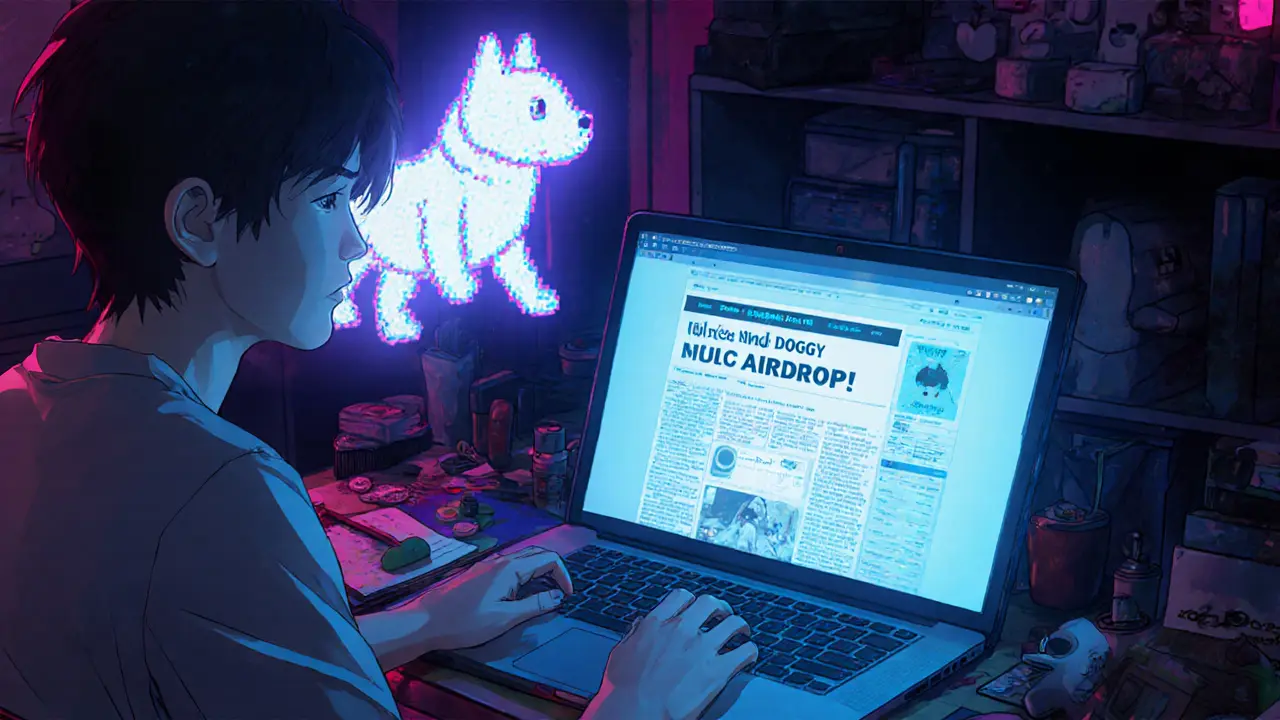DOGGY Airdrop Checker
Verify a DOGGY Airdrop Claim
Enter details about an airdrop claim to determine if it's likely legitimate or a scam.
Verification Checklist
- Check the official project channels. Go straight to the project's verified Twitter handle, Discord server, or website. Look for a pinned announcement that includes a snapshot block number.
- Search the blockchain. For ERC-721 collections, use Etherscan to see if a large number of tokens were transferred from the contract to new addresses around the claimed date.
- Look for third-party coverage. Reputable crypto news sites (CoinDesk, The Block, etc.) will report on major airdrops. Absence of coverage is a warning sign.
- Beware of up-front fees. Legitimate airdrops never ask you to send funds or sign a transaction that moves tokens out of your wallet.
- Check the domain. Phishers often use look-alike URLs (e.g., doggy-airdrop.com). The real project will use its official domain and SSL certificate.
Result
Ever stumbled on a headline promising a massive DOGGY airdrop and wondered if it’s legit? You’re not alone. The crypto world is flooded with dog‑themed projects, and the names often blur together. This guide cuts through the noise, explains what the DOGGY project actually is, shows why an official airdrop looks doubtful, and equips you with a checklist to avoid scams.
What Exactly Is DOGGY?
DOGGY is a collection of 10,000 unique, pixel‑art NFTs branded as "Crypto Doggy". Each token lives on a standard ERC‑721 contract, trades for a fraction of a cent, and carries no associated fungible token that could be airdropped. The project’s official description states its focus is on collectible artwork, community‑driven art events, and occasional merch drops, not mass token distributions.
Because the NFT market often uses mint‑lists or whitelist sales rather than airdrops, many newcomers mistakenly assume DOGGY will follow the same route as other dog‑themed coins.
The Airdrop Craze Around Dog‑Themed Tokens
Three separate projects dominate the "dog" conversation:
- DOGS is a Telegram‑native token built on the TON blockchain. In September 2024 it completed a historic airdrop that handed out over 380billion DOGS to more than 20million users. The token is listed on exchanges like KuCoin and has an active governance model.
- DOG (often styled as DOG•GO•TO•THE•MOON) is a Bitcoin‑based rune token. Its April2024 airdrop rewarded 100billion DOG to holders of Runestone Ordinals, a niche community of early Bitcoin NFT collectors.
- The Runestone Ordinals protocol records Bitcoin‑based NFTs called "ordinals". Holders of specific ordinals before block 840,249 qualified for the DOG rune airdrop.
Both DOGS and DOG used clear, on‑chain snapshots and public claim portals. Their announcements were picked up by major crypto news outlets, and the distribution data is publicly verifiable.

Why a DOGGY Airdrop Looks Suspicious
Several red flags suggest there is no official DOGGY airdrop:
- The DOGGY NFT contract shows zero 24‑hour trading volume. A token with no market activity rarely funds a large‑scale giveaway.
- Official channels (the project's Twitter, Discord, and OpenSea listings) have never mentioned an airdrop. The only promotions revolve around new artwork releases.
- Unlike DOGS and DOG, DOGGY does not have a native fungible token (ERC‑20) that could be distributed. Its assets are purely non‑fungible.
- Scam warnings on forums repeatedly warn users about "DOGGY airdrop" phishing links that mimic official branding.
In short, the hype is driven by name similarity, not by any concrete on‑chain event.
How to Verify a Real Airdrop
If you encounter a claim about a DOGGY airdrop, run through this checklist before clicking any link or providing a wallet address:
- Check the official project channels. Go straight to the project's verified Twitter handle, Discord server, or website. Look for a pinned announcement that includes a snapshot block number.
- Search the blockchain. For ERC‑721 collections, use Etherscan to see if a large number of tokens were transferred from the contract to new addresses around the claimed date.
- Look for third‑party coverage. Reputable crypto news sites (CoinDesk, The Block, etc.) will report on major airdrops. Absence of coverage is a warning sign.
- Beware of up‑front fees. Legitimate airdrops never ask you to send funds or sign a transaction that moves tokens out of your wallet.
- Check the domain. Phishers often use look‑alike URLs (e.g., doggy‑airdrop.com). The real project will use its official domain and SSL certificate.
Comparison of the Three Major Dog‑Themed Projects
| Feature | DOGGY (NFT) | DOGS (TON Token) | DOG (Runes) |
|---|---|---|---|
| Type | ERC‑721 NFTs | ERC‑20‑like token on TON | Bitcoin‑based rune token |
| Supply | 10,000 unique tokens | 550billion DOGS | 100billion DOG |
| Airdrop History | No verified airdrop | 380billion DOGS to 20M+ users (Sept2024) | 100billion DOG to 75k Runestone holders (Apr2024) |
| Primary Platform | Ethereum | Telegram TON blockchain | Bitcoin (Runes protocol) |
| Active Exchanges | None (low liquidity) | KuCoin, Gate.io, others | Mostly peer‑to‑peer |
| Community Size (approx.) | Few hundred holders | >53million participants | ~75k eligible holders |
Risks and Common Scams Around "Dog" Airdrops
Scammers love the buzz. Typical tricks include:
- Phishing sites. Clone the DOGGY Discord invite page and ask for your private key.
- Fake claim bots. Bots that ask you to connect your wallet to a bogus portal, then drain funds.
- Impersonation tweets. Fake @DOGGYOfficial accounts promising a $1000 airdrop if you retweet and DM a wallet address.
Because the DOGGY collection has almost no market activity, any sudden surge of “free” tokens is a huge red flag. Always verify the source before acting.
What to Do If You See a DOGGY Airdrop Claim
- Do not click any links. Instead, open a new browser tab and manually type the official website URL (check the @doggy_nft handle on Twitter).
- Search the claim on reputable forums (Reddit r/CryptoCurrency, Bitcointalk) to see if others have flagged it.
- If the claim appears on a community‑run Discord, ask the moderators for proof of the announcement.
- Report phishing URLs to sites like PhishTank and to the platform (Twitter, Telegram) where you saw the post.
- Consider setting up a separate “watch‑only” wallet to monitor any unexpected token inflows, but never share its private key.
Staying skeptical and doing a quick verification step can save you from losing assets.
Frequently Asked Questions
Is there an official DOGGY airdrop scheduled for 2025?
No. As of October2025, the DOGGY NFT project has not announced any airdrop. All official channels only discuss new artwork drops and community events.
How does the DOGS airdrop differ from a typical NFT mint?
DOGS distributed a fungible token (ERC‑20 style) to millions of Telegram users via an on‑chain snapshot. NFT mints, like DOGGY, allocate a unique token per buyer and usually require a purchase or whitelist.
Can I claim a DOG token if I hold Runestone Ordinals?
Yes, but only if you owned qualifying ordinals before block840,249. The claim window closed in April2024, and the distribution was handled through the official Runestone portal.
What’s the safest way to check if a token airdrop is real?
Use the five‑point verification checklist: official channel confirmation, blockchain explorer proof, third‑party news coverage, no upfront fees, and correct domain validation.
Why does DOGGY have zero 24‑hour volume?
The collection is niche, with only a few hundred active holders. Low liquidity and minimal trading interest keep the volume at $0.
Should I participate in any "DOGGY" giveaway that asks for my private key?
Never. Private keys should never be shared. Any giveaway demanding them is a scam.


Post Comments (3)
Thanks for the thorough guide; it’s helpful to have a clear checklist. Appreciated!
The purported “DOGGY airdrop” is nothing more than a classic phishing vector, leveraging buzzword‑laden marketing ploys, fraudulent domain spoofing, and social‑engineered urgency; its architecture mirrors that of known rug‑pull scaffolds, exploiting the naïve credulity of newcomers, and the lack of any on‑chain tokenomics substantiates its inauthenticity, thereby rendering the entire proposition fundamentally unsound. Consequently, any wallet interaction that demands pre‑payment or private‑key disclosure should be categorically rejected.
The checklist you laid out aligns well with standard due‑diligence steps. Verifying the official Discord, scanning Etherscan for bulk transfers, and confirming coverage on reputable sites are all solid anchors against deception.